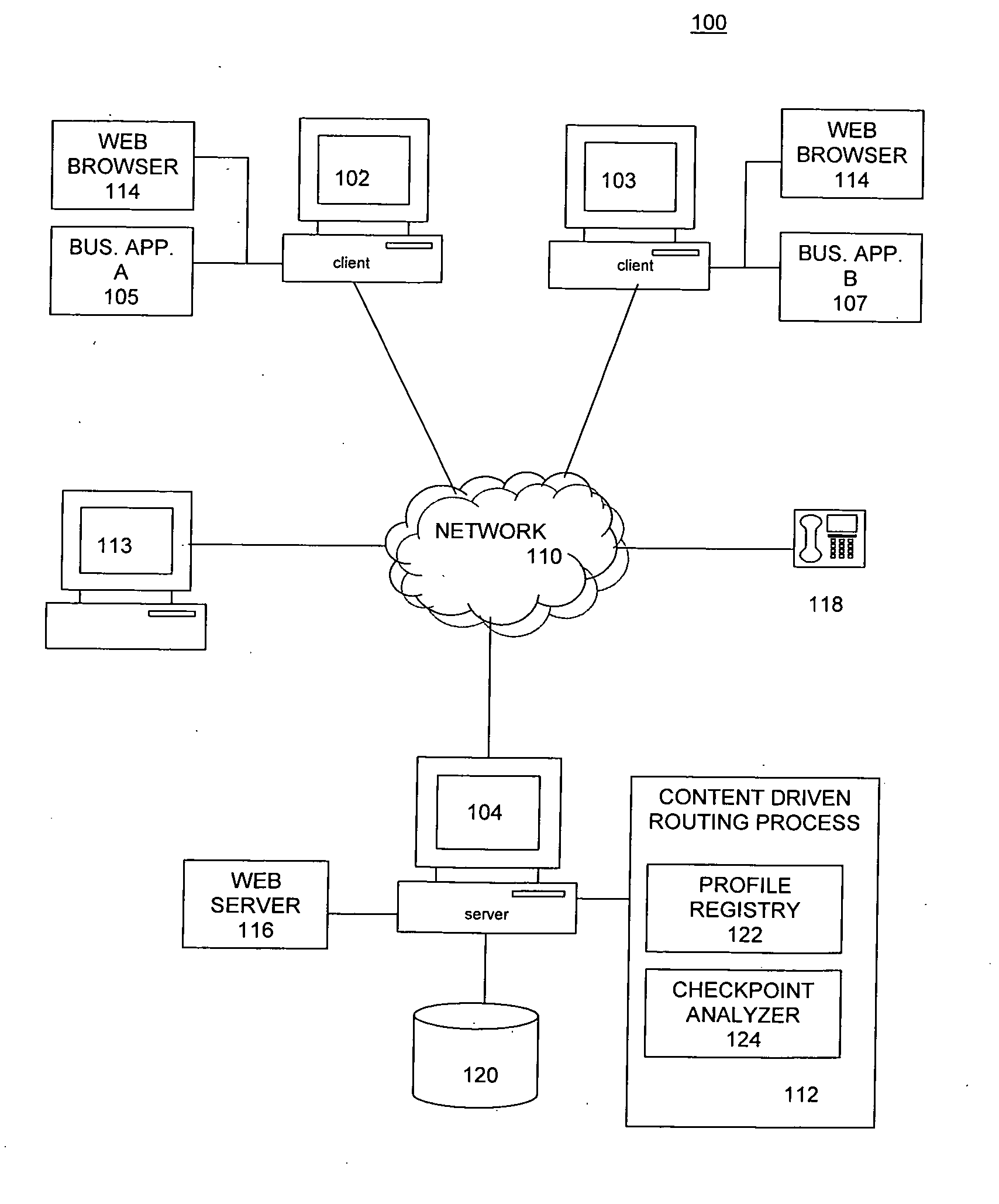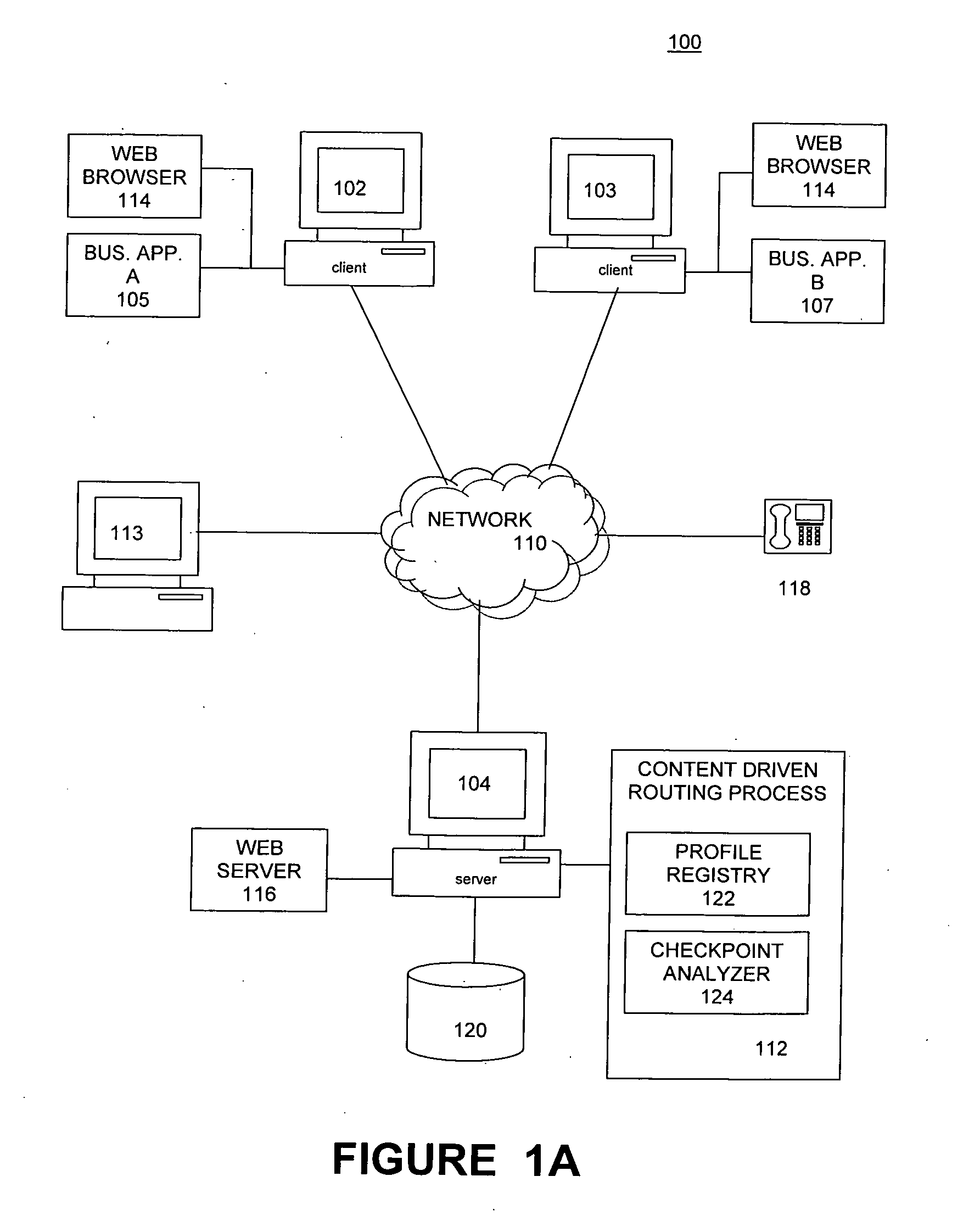Content driven process routing for integrated enterprise applications
a technology for enterprise applications and process routing, applied in the field of computer applications, can solve the problems of manual and mesh-based communication methods, inability to facilitate the sharing of common data, and inability to communicate effectively across work teams, etc., and achieve the effect of facilitating the routing of application processes
- Summary
- Abstract
- Description
- Claims
- Application Information
AI Technical Summary
Benefits of technology
Problems solved by technology
Method used
Image
Examples
Embodiment Construction
[0018] Embodiments of a system for providing a content-driven routing scheme among a number of different integrated applications and work teams in a distributed enterprise environment is described. In general, the term “distributed enterprise application environment” refers to cross team and cross company scenarios present in a large scale project involving different networked users. In the following description, numerous specific details are introduced to provide a thorough understanding of, and enabling description for, embodiments of the content driven routing process. One skilled in the relevant art, however, will recognize that these embodiments can be practiced without one or more of the specific details, or with other components, systems, and so on. In other instances, well-known structures or operations are not shown, or are not described in detail, to avoid obscuring aspects of the disclosed embodiments.
[0019] Embodiments are directed to a content routing process for an ap...
PUM
 Login to View More
Login to View More Abstract
Description
Claims
Application Information
 Login to View More
Login to View More - R&D
- Intellectual Property
- Life Sciences
- Materials
- Tech Scout
- Unparalleled Data Quality
- Higher Quality Content
- 60% Fewer Hallucinations
Browse by: Latest US Patents, China's latest patents, Technical Efficacy Thesaurus, Application Domain, Technology Topic, Popular Technical Reports.
© 2025 PatSnap. All rights reserved.Legal|Privacy policy|Modern Slavery Act Transparency Statement|Sitemap|About US| Contact US: help@patsnap.com



